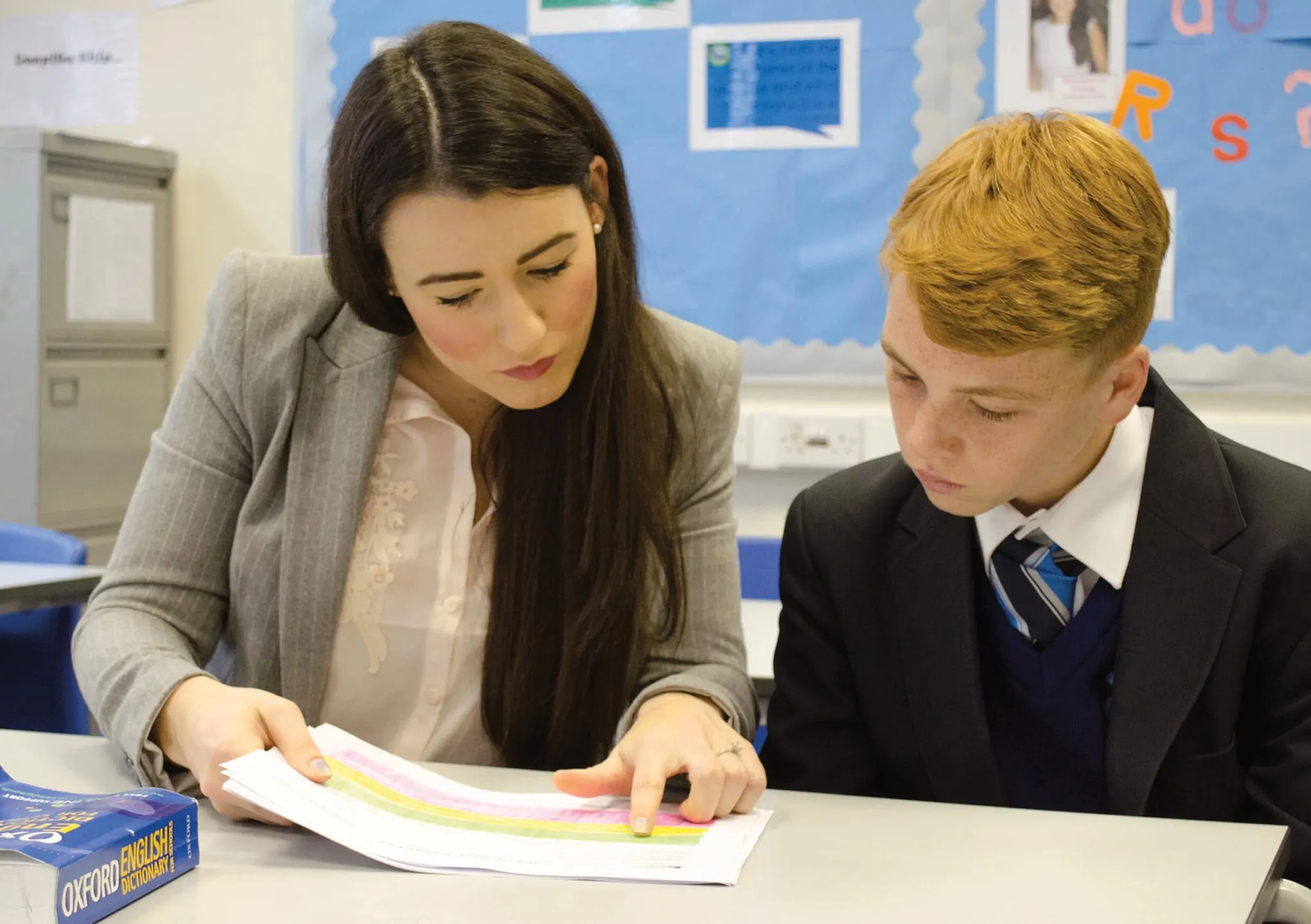September 4, 2024
The transition from primary to secondary school is a critical period for students, and The Hazeley Academy’s comprehensive literacy strategy is designed to bridge any gaps that may arise. Through early assessment, screening, and a strong focus on fostering a love for reading, the school is ensuring that every student is supported in their academic journey. We spoke to Director of Literacy, Georgina Stapleton, and School Librarian, Natasha Stevenson, who emphasised that a smooth transition is not just about continuity in education but also about cultivating a culture of literacy that will benefit students throughout their secondary school experience and beyond.
Preplanning and preparation for a new Year 7 cohort
The transition process begins well before the students step through the doors of Hazeley Academy. As Director of Literacy, I place emphasis on creating a strong reading culture from the outset. For example, this morning, I was at one of our feeder primaries, observing some Year 6 lessons, looking at the books the children were reading and their guided reading activities. This particular school is a main feeder primary in the trust, and they will send me a list of all their Year 6 guided reading texts so we can mirror their level of challenge. This allows us to ensure continuity, either by revisiting these texts or by avoiding them to introduce new material.
In addition to this, we’ve established a tradition of gifting incoming Year 6 students a copy of the book Wonder by R.J Palacio during their taster day. We ask them to read it before their first library lesson and also provide an audiobook link for those who prefer listening. It’s a text that everyone can access on some level, and it helps create a shared reading experience.
We like to create a sense of community through our annual ‘Hazeley Fest,’ where Year 6 students are invited to sleep over and camp on the school field. Not all of them sleep! But there’s something incredible about 200 students sharing hot chocolate with marshmallows and reading Wonder together before bed.
Assessing literacy levels of incoming students
All of our Year 7 students will do a Star Reading test, and we also receive their SATs results from our feeder schools at the end of the summer term. For students with a SATs score of less than 95, additional phonics testing is conducted. The Star test identifies those who struggle with comprehension, while the phonics test picks up on issues with fluency. We introduced this strategy last year and it has made a huge difference for those students who need extra help.
Timing is also a critical factor in obtaining accurate assessments. The students don’t take the Star test until we’ve had two full weeks with each group in the library. We want them to feel settled and familiar with their new environment to ensure we get true results.
Using data to pinpoint strengths and weak areas
As soon as we’ve completed Star Reading tests, we identify students in need of ‘urgent intervention’ and the specific areas where they require support. This data is then uploaded onto a spreadsheet which Natasha and I will look through together and then share with teaching staff across the school who find it useful for their own monitoring. This allows us to ensure that every student receives the support they need to succeed.
Library Lessons: Introducing Accelerated Reader and Star Reading
As School Librarian, in my experience the students who have previously used Accelerated Reader (AR) usually want to get on and quiz straight away on the books they’ve read over the summer. But, for those who are new to it, we spend time in their second library session explaining what AR and Star testing are, ensuring they fully understand the process before diving in.
By introducing AR and Star Reading early, we aim to encourage students to take ownership of their literacy progress. The children put their Zone of Proximal Development (ZPD) and points target in their planners, and we show them how to log on to AR and access their progress page, this helps them track their levels and points targets, giving them a sense of control and motivation.
